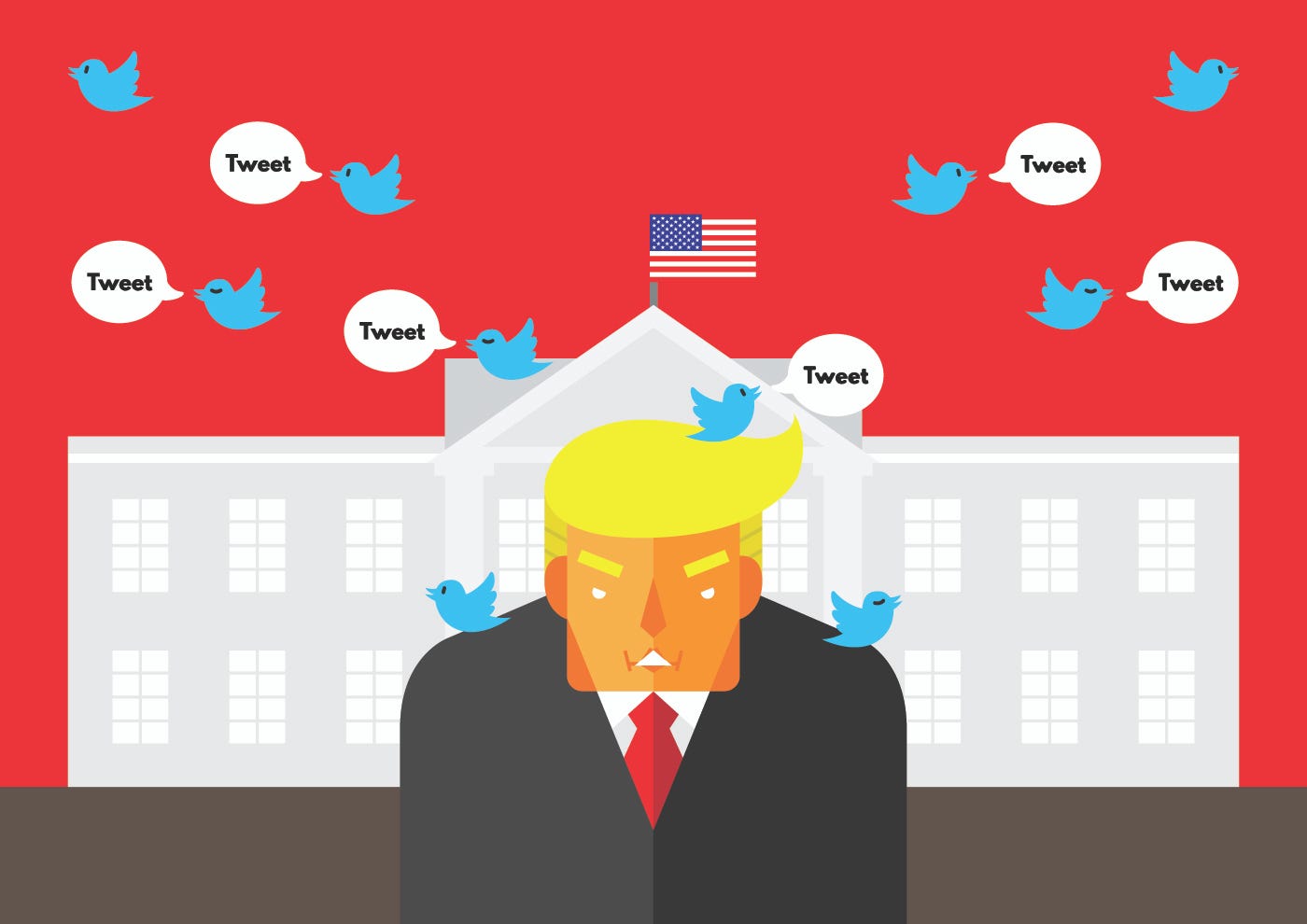
The New York Times’s article “Barack Obama Takes On a New Role: Fighting Disinformation” by Steven Lee Myers and Cecilia Kang presents the new steps and direction former President Obama is taking in combat against the rise of misinformation via technological platforms. Expansive and popular social media companies, such as Facebook, Twitter, and YouTube are highlighted within this article as the main perpetrators in providing a platform for misinformation to spread like wildfire. Seeing this development as harmful to the state of the United States democracy, Obama is now taking action in sponsoring the decrease of this problematic issue: “fake news,” and misinformation campaigns, sources, and feeds. This article provides explanation as to how misinformation can spread so significantly in the first place, and why it is, as Myers and Kang’s article have implied through their use of Obama’s intentions, harmful to the condition of United States democracy.
Starting from the bigger picture, information spreads throughout a group of people because they are connected to each other in some shape, way, or form. Achen and Bartels refer to this observation as the “network.” [1] Densely populated areas, established communities, a family, or a group of friends will likely interact with each other in a way that shares ideologies, values, and opinions about current events amongst themselves. Through this frequent interaction, one can notice the formation of a common, group-held opinion or outlook about a certain event, incident, or concept (see: shark attack and locust infestation, Achen and Bartels). When a piece of false or misinterpreted information reaches the community, members will take what is said as true, and instill those ideas into their belief systems– this is especially true if the main individual holding this information and spreading it to the community is that in a status of leadership within the community, or has a history of credibility within that group. When put into the context of mass media, it makes complete sense as to why the United States is experiencing influx of a misinformed people: information and discussion that once occurred on a smaller scale is now occurring at an infinitely-quicker pace, reaching a much larger audience, for vast multitudes of networks, both national and local, are tightly connected via streams of social media in the present day.
But, now analyzing the smaller details of the picture, the question then arises as to how inaccurate, misinterpreted, or distorted information is instilled within individuals in the first place. According to Miller and Saunders, it is likely for an individual who has high amounts of obtained knowledge (whether accurate and unbiased or not), yet hold lack of trust in authorities or the government, to have conspiratorial conclusions about events. [2] This exact behavior is what can be seen in conservative conspiracy theorists (see: Alex Jones in United States of Conspiracy). Because these individuals are still obtaining some form of information (regardless of its validity), they are their own category, with their own characteristics, in contrast to the uninformed public: it is typical of the misinformed to be more active in political discourse and activity, since they, unlike the uninformed, do have knowledge to spread, and opinions to uphold in the realm of discussion. Social media plays an important role in this discourse ruled by the misinformed, as it is the most accessible platform for them to spread their distorted thoughts and opinions to a greater audience, gaining traction and popularity as it travels through the exponentially large networks of community.
Within these networks this article has spoken of, an echo chamber of social and political opinion is created, where the ideologies and values held by individuals are further reinforced due to the affirmations of the like-minded community. [3] Social media, being the most critical shareholder of networks, is a huge echo chamber for each individual using the platforms, reinforcing what has already been searched for, or what the individual has already decided to have on their feed. There is little to no control of what information can be spread to the feed of the United States public, nor a confirmation that unbiased, balanced sources are being presented in the feeds. [4] This is a direct, dangerous threat to the inherent norms required for a strongly consolidated democracy: an educated, well-informed public [5], and the allowance for healthy, conflicting ideas to be in civil conversation for the benefit of democracy [6].
Obama has realized that the influence of uncontrolled media is astronomically threatening to the future of United States democracy. As the nation becomes more and more connected to the internet and social media, it is of great importance for the information provided to the masses via social media to be of genuine benefit and education, for only through an educated public can the growth of civic engagement, responsible civic decision, and respectful civil discourse can occur
Sources
[1] Achen, Christopher H., and Bartels, Larry M. Democracy For Realists: Why Elections Do Not Produce Responsive Government. Princeton and Oxford: Princeton University Press, 2017. [2] Miller, Joanne M., Saunders, Kyle L., and Farhart, Christina E. “Conspiracy Endorsement as Motivated Reasoning: The Moderating Roles of Political Knowledge and Trust” American Journal of Political Science, 2016. [3] Iyengar, Shanto, and Westwood, Sean J. “Fear and Loathing across Party Lines: New Evidence on Group Polarization.” American Journal of Political Science, 2015. [4] Myers, Steven Lee, and Cecilia Kang. “Barack Obama Takes on a New Role: Fighting Disinformation.” The New York Times. The New York Times, April 20, 2022. https://www.nytimes.com/2022/04/20/technology/barack-obama-disinformation.html. Paragraphs 25-32. [5] Lipset, S. M. Some Social Requisites of Democracy: Economic Development and Political Legitimacy. 2013. [6] Dahl, R. Polyarchy Participation and Opposition. New Haven: Yale University Press, 1972. [7] “United States of Conspiracy.” PBS. Public Broadcasting Service. Accessed April 20, 2022. https://www.pbs.org/wgbh/frontline/film/united-states-of-conspiracy/.
0 Comments